This was published 7 years ago
Robben Island and Cape Town: What kids can learn
By Sally Webb
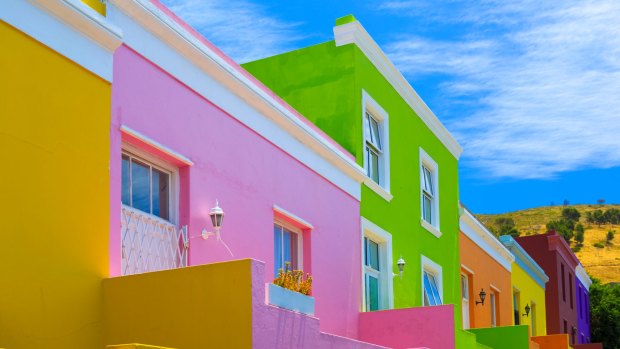
Brightly-coloured houses in Bo-Kaap neighbourhood, Cape Town.Credit: iStock
Our guide, Tom Moses, speaks quietly. The large group gathered around him includes several children, my own among them, but you could hear a pin drop as he shares his story.
"On December 6, 1976, I lost my name," he says. "From that day forward I was known only as prisoner 15/0014."
Moses spent 12 years as a political prisoner, 11½ of them on Robben Island, the notorious prison most famous for being where Nelson Mandela was incarcerated for 18 of the 27 years he spent behind bars. After Table Mountain, it's Cape Town's biggest drawcard with more than 46,000 visitors each year, who travel to the island via ferry across Table Bay.
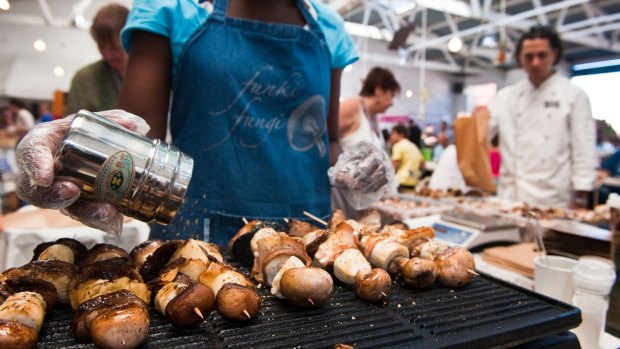
The Neighbourgoods Market in the Woodstock district takes place every Saturday.Credit: Alamy
The stories Moses shares with us, of the terrible conditions and deprivations he and other inmates faced, are spine chilling, but he admits it could have been worse. As a coloured rather than a black prisoner he had certain privileges, including being allowed to wear shoes.
My children, 11 and 9, hang off his every word and the visit prompts many discussions about the country's history, the horror of apartheid and how people fight for – and in many cases die for – what they believe in.
Robben Island is a testament to courage and fortitude in the face of extreme brutality. And, in an astounding display of forgiveness and reconciliation, all the guides are former political prisoners. Our first guide, who accompanies us on a bus tour around the small island, clearly doesn't want to be there. As he admits, he finds it difficult to return every day to the place from which, for many years, he couldn't escape, but the alternative is unemployment.
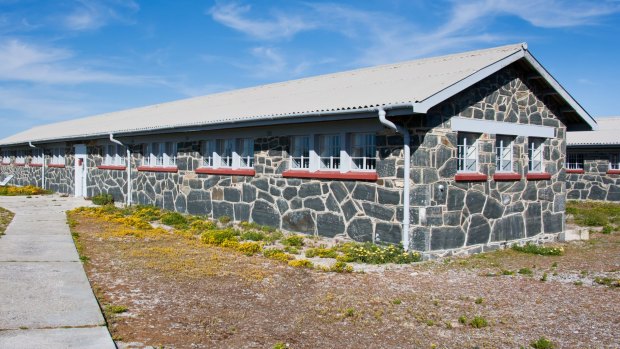
Prison barracks on Robben Island.Credit: iStock
He is demonstrably angry when talking about the racial identity cards all South Africans were forced to carry. As tour guides go, he's not a particularly good one, but it doesn't matter. His raw emotion is palpable and makes this experience very real.
As we pass them, he talks about the island's important sites, including the infamous limestone quarry where prisoners toiled on long hot days in searing sunlight. Many of the prisoners, including Mandela, suffered snow blindness as they were made to carry rocks from one end to the other, and back again, for no purpose at all.
He points out a small cave on the far side of the quarry. This was the prisoners' toilet area. With no drainage, it was the one place the prison guards never entered and as a result it became an important location for the prisoners to talk and plan their political activities.
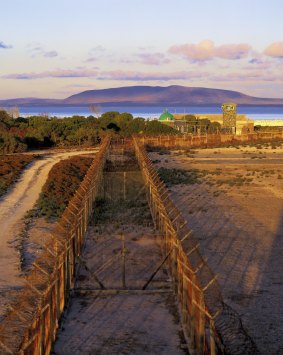
The fence arround the maximum security prison, Robben Island.Credit: Alamy
Our short Cape Town sojourn is sandwiched between extraordinary safaris in Botswana's Okavango Delta and South Africa 's Kwa Zulu Natal region. The urban stay helps to put the country and its history in perspective and make the children understand that South Africa is about much more than the luxury safaris they are so fortunate to experience.
We're based in a lovely self-contained apartment run by the More Quarters group, in the central Tamboerskloof neighbourhood just off eclectic Kloof Street. Table Mountain is a distinctive landmark above us and it's natural that we (like many visitors) make it our first stop.
We ascend via one of two revolving cablecars which the kids think is "epic". I've been here before with my husband, sans children, when we climbed a very steep track to the top, finding ourselves in a blizzard when we eventually got there. Today it's perfect weather to admire the endemic flora that abounds on the summit and the stunning views over the city in one direction and towards the Cape of Good Hope in the other.
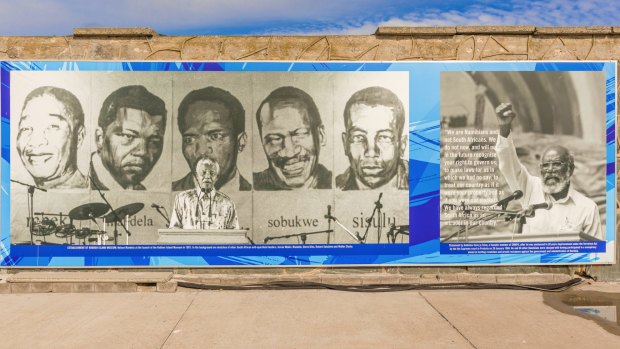
Mural on Robben Island Prison wall.Credit: iStock
Later we drive around the barren streets of District Six. Our driver Ali, explains that his Malay Muslim parents were among the 60,000 people forcibly removed from what was once the city's most vibrant, multi-racial neighbourhood. It brings a very personal flavour to the experience.
He also suggests we visit the Slave Lodge, a museum in one of the city's oldest, and most notorious, buildings, near the original Company Gardens. It's here that Africans were sold as slaves, many of them ending up as unpaid labourers on plantations in America's southern states, and it's helpful to explain to the children that disadvantage and discrimination are as old as the city itself.
We love the vibrant Neighbourgoods Market in a converted biscuit mill in Woodstock which sells a plethora of ethnic foodstuffs and artisan crafts and is a true celebration of all the positive aspects of the Rainbow Nation. And Bo Kaap, the Cape Malay area famous for its picturesque coloured houses, is a highlight, in particular the classic Gatsby sandwich – a huge, 30-centimetre long roll stuffed with meatballs, gravy, chips and salad leaves – which even four of us struggle to eat.
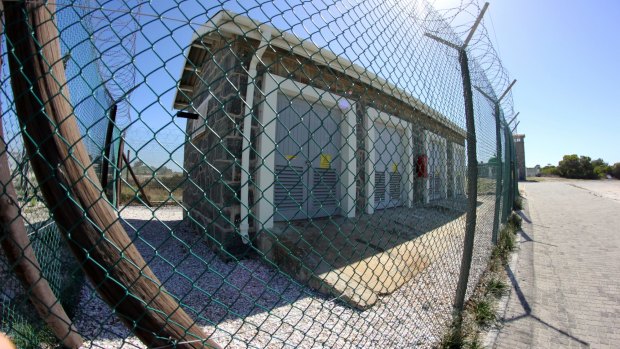
A cell block at Robben Island, the infamous island prison that held Nelson Mandela for 18 of his 27 years of his incarceration during the apartheid regime.Credit: iStock
However, at times it's a challenge to explain the country's recent history and the brutality and injustice of the apartheid regime. More than once my children ask a simple question, "Why?", which is difficult to answer.
A highlight for all of us is visiting Langa, the oldest township on the Cape Flats.
It's confronting for our cosseted, middle-class kids to be faced with such poverty and disadvantage in parts. We see a family of six living in a single room the size of my daughter's bedroom as they wait to be assigned a more permanent "Mandela house", and see the public loo strip where hundreds of people share a handful of portable toilets, which are emptied only once a week. However, they also witness the strength that comes from community, the industriousness of many township residents and learn, as Ali explains, that when people do well financially in Langa, they don't necessarily leave, often moving to a better house in a more "upmarket" area.
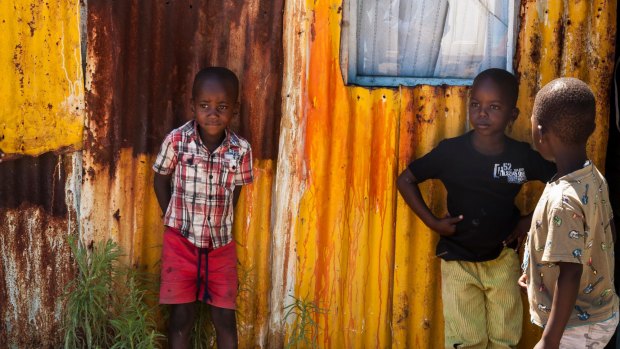
Langa township.Credit: Alamy
Back at Robben Island, as we explore the various prison buildings, we fall behind the rest of the tour group, take a wrong turn and get lost in a deserted cell block. Amusing for a short while, it becomes more alarming when we realise the last ferry is due to depart shortly and the wharf is a good 10-minute walk away. Eventually Tom Moses finds us, near the tiny cell that Nelson Mandela occupied for so many long, hard years.
We are so late that we end up missing the tourist ferry and have to catch a larger catamaran with many of the staff from the island. We recognise the reticent, emotionally scarred guide from our earlier bus tour; Tom Moses is there as well.
The mood is buoyant, at the end of the working day, as the boat plies its way back to Cape Town and the looming presence of Table Mountain inches closer. It becomes even more festive when the captain pipes music through the speakers, and several passengers, staff and tourists, black and white, get up for an impromptu dance. We recognise one of the tunes – Shosholoza, a folk song that has become almost a second national anthem for South Africa.
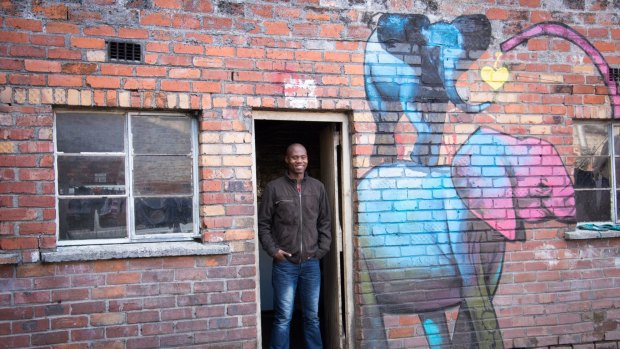
One of the locals in Langa.Credit: Sally Webb
The cabin erupts as everyone breaks into this spiritually charged, emotive song, which is simultaneously plaintive and hopeful. And once again, like much of South Africa, it's spine-chilling stuff.
FIVE MORE THINGS FOR FAMILIES TO DO IN CAPE TOWN
LION'S HEAD
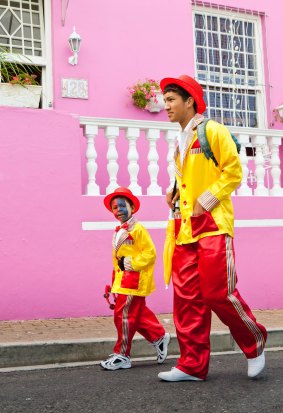
Dressed up for the Cape Town Carnival, in Bo Kaap, Cape Town.Credit: iStock
The view from Lion's Head over Cape Town is arguably better than that from Table Mountain as you get the iconic landmark in your panorama as well.
V&A WATERFRONT
Street performers, from clowns to African drummers, people the V&A Waterfront on the edge of Cape Town's working harbour. It's full of shops (more than 400 of them), cafes and eateries with a lively exhibitions and events year-round.
BIESMIELLAH, BO KAAP
There are flasher alternatives to this slightly shop-worn street-corner eatery, but you can still taste the Cape Malay history in Biesmiellah's spice-laden dishes such as tomato bredie (braised lamb with onions and tomato).
THE FRANSCHOEK MOTOR MUSEUM
More than 100 years of motoring history is on display in this stunningly located museum, about an hour from Cape Town, owned by billionaire Johann Rupert. Motorhead nirvana.
CHARLY'S BAKERY
A popular family-run bakery in District Six that produces fabulous designer cakes (and small, sweet things to nibble while you admire them).
FLY
Virgin Australia flies in codeshare with South African Airways from Melbourne and Sydney via Perth. See virginaustralia.com.au or flysaa.com
STAY
More Quarters offers well appointed, centrally located apartment accommodation in a cluster of beautifully decorated, restored terrace houses just off vibrant Kloof Street. You get the benefit of hotel services, including excellent breakfasts served in an exquisite first floor room in the main reception building, with all mod cons and full cooking facilities, so it's perfect for families.
Two-bedroom apartment from ZAR1995 per person per night.
Sally Webb travelled with the assistance of &Beyond (andbeyond.com) and World Journeys (worldjourneys.com.au)
Sign up for the Traveller Deals newsletter
Get exclusive travel deals delivered straight to your inbox. Sign up now.